Multiple launch rocket systems used by Chinese People's Volunteers in the Korean War
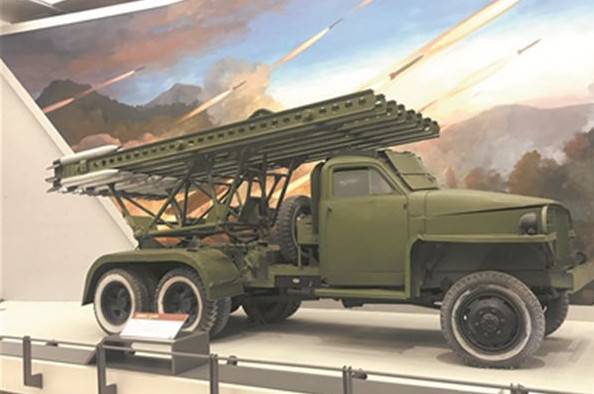
It is known that after the invention of black powder in the 1950th century, primitive rockets were made in China, used for fireworks and in military affairs. Despite this, the first multiple launch rocket systems with truly high combat effectiveness were adopted by the Chinese army only in the XNUMXs, after the formation of the PRC.
German six-barreled rocket launcher 15 cm Nb.W. 41
After the end of World War II, the Soviet Union provided the Chinese communists with very substantial support, which ultimately led to the victory of the CPC in the armed confrontation with the Kuomintang. In addition to material assistance, the USSR supplied large consignments of military equipment and weapons. It was weapon Soviet production, as well as trophy - Japanese and German.
A number of sources say that together with other Japanese and German artillery systems, German six-barreled rocket launchers 15 cm Nb.W. captured by the Red Army were transferred to the PRC. 41 (Nebelwerfer 41).
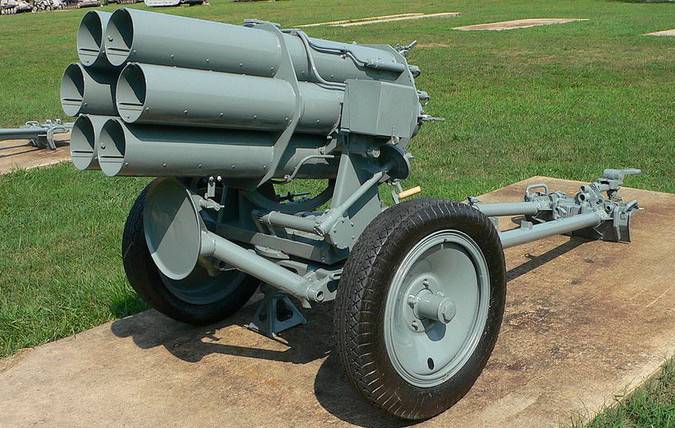
Shooting from the German rocket launcher was carried out with high-explosive fragmentation mines (real caliber 158,5 mm), the stability in flight of which was provided by a kind of turbine, which had 28 nozzle holes around the circumference with a minimum diameter of 5,5 mm, inclined at an angle of 14 °. Although oblique nozzles somewhat reduced the efficiency of the jet engine, thanks to rotation stabilization, the German MLRS with a maximum firing range of 6 m had very good accuracy for that time.
At a distance of 6 m, the spreading of mines with a launch weight of 000 kg along the front was no more than 34,15 m, in range - up to 90 m. The warhead contained 100 kg of TNT and was located in the tail of the projectile. The dispersal of lethal fragments during the explosion of a high-explosive fragmentation warhead reached 2 meters along the front and 40 meters ahead of the place of rupture. Individual large fragments retained their lethal force at a distance of more than 15 m.
The combat weight in the equipped position was equal to 770 kg, in the stowed position - 515 kg. For short distances, the installation could be rolled by the forces of calculation. The volley lasted about 10 seconds. A well-functioning crew of 5 people could reload the gun in 90 seconds.
Unfortunately, during the preparation of this publication, it was not possible to find photographs or documents confirming the participation of the German "Fog-throwers" in the Korean War. If they were used there, it was very limited, and did not have a noticeable effect on the course of hostilities.
Multiple launch rocket systems Type 505/506
Even before the communists established full control over the entire territory of the country, work began in China to create its own models of rocket artillery.
The civil war had an extremely negative impact on the state of the Chinese economy. Many Chinese heavy industries and arsenals were in need of rebuilding and reconstruction. And those that retained their working capacity experienced a shortage of high-quality metal and a shortage of qualified specialists.
Under these conditions, it was absolutely unrealistic to organize the rapid production of modern artillery pieces with a rifled barrel on our own. In this regard, the PLA leadership initiated the creation of simple and inexpensive rocket launchers capable of providing direct fire support to infantry units. The main conditions put forward in the creation of the MLRS were simple design, low cost and the use of available materials.
Initially, the Chinese experimented with American 4,5 "BBR rockets (BBR - Beach Barrage Rocket). These missiles were very actively used against the Japanese by the American Navy and the USMC.
Shipboard launchers of 4,5 "BBR projectiles were packs of honeycomb guides mounted on the decks of assault support ships at an angle of 45 ° to the horizon. Each of these ships could fire several hundred rockets in a matter of seconds, ensuring the destruction of defensive structures and living enemy forces on the shore.

The 114-mm 4,5 "BBR projectile weighed 13 kg, its length was 760 mm. Powder rocket charge weighing 6,5 kg provided a maximum projectile speed of 233 m / s, the firing range was about 1 km. Warhead containing 2,9 kg of TNT, in its action was comparable to a 105-mm howitzer high-explosive fragmentation projectile. At the same time, the 4,5 "BBR rocket had a simple design and was cheap to manufacture. The large dispersion was compensated for by the massive use.
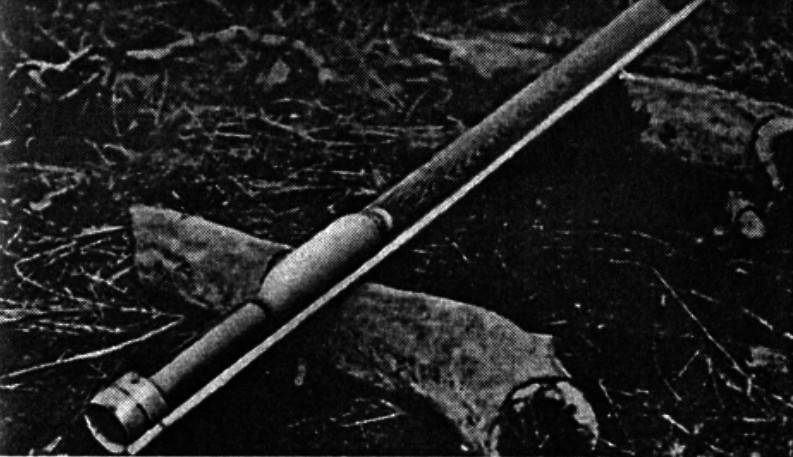
During tests of 114-mm rockets, the Chinese tried to launch them from tray guides. It was assumed that such simple launchers would fire at enemy positions.
However, it soon became clear that the 4,5 "BBR projectile has very poor accuracy. Also, the Chinese military was not satisfied with the short firing range. As a result, this project was rejected.
At a mine machinery plant in Jingxing, an attempt was made to create a multiple launch rocket system that used a clone of the American M8 missile.
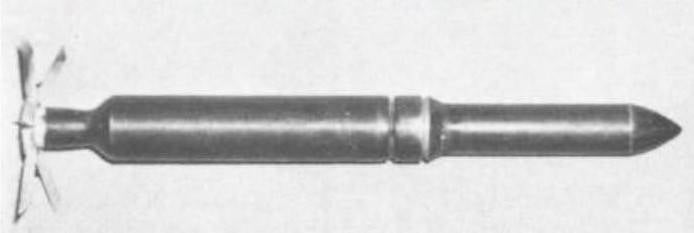
The 114 mm M8 rocket projectile weighed 17,6 kg and was 911 mm long. The main engine consisted of 30 powder sticks 127 mm long, 22,2 mm in diameter, with a total mass of 2,16 kg and provided a speed of 270 m / s. The firing range was 4,2 km. The high-explosive fragmentation warhead contained 1,9 kg of TNT.
American 114mm rockets, originally designed for assault aviation, during the Second World War, they were very actively used by the ground forces and fleet... Tubular launchers of M8 missiles were suspended under the plane of combat aircraft, mounted on tanks, trucks, jeeps and armored personnel carriers, and in the navy - on ships. Despite the "aircraft origin" of the M8 missiles, the ground forces and the navy used up these rockets several times more, using them from multi-barreled multiple launch rocket launchers.
In general, the M8 rocket was not bad and was quite suitable for use in a ground-based MLRS. The problem was that the Chinese industry was not able to organize the mass production of high-quality powder bills of the required length and thickness.
Due to technological difficulties, it was decided to reduce the caliber of the rocket to four inches. With this rocket, carrying a warhead weighing 1 g, it was possible to reach a firing range of 200 m. However, 4-mm feathered rockets, which were a smaller copy of the American M000, gave too much dispersion. After test firing, the PLA command demanded improved accuracy and increased range.
In 1949, specialists from the 52nd Northeast Artillery Arsenal in Shenyang, based on research carried out earlier at the Jingxing Mine Machine Plant, developed two types of four-inch rockets known as Type 427 and Type 488. Both shells had oblique nozzles at the bottom and stabilized in flight by rotation. Type 427 had a firing range of 5 m, and Type 000 had a range of 488 m. The first large batch of Type 6 shells was fired in October 400.
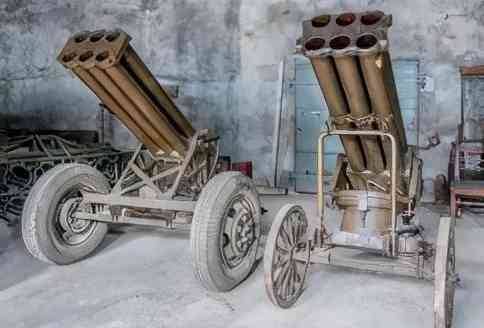
To launch 101,6-mm rockets, Type 505 (M-505) and Type 506 (M-506) six-barreled launchers were used, which, together with the shells, passed under the designation "A3 field missile system."
For the early Type 505 launcher, a riveted carriage with wooden wheels on a metal rim was made. For the Type 506, a welded structure was used with wheels borrowed from the American 37 mm M3A1 anti-tank gun. Several hundred of these weapons ended up in the hands of the Chinese communists after the evacuation of the Kuomintang troops to Taiwan. By the beginning of the 1950s, 37-mm cannons were no longer of great combat value; they were mainly used in the PLA for training purposes.
Launcher Type 506 without shells weighed 420 kg. Barrel length - 2 mm. Electric batteries were used to launch the rockets. Thanks to pneumatic wheels, the Type 032 unit could be towed by vehicles at a speed of up to 506 km / h.
Soon after the launch of the first Chinese MLRS into mass production, the Korean War began. According to Chinese sources, 240 rocket launchers had been produced by the end of hostilities in Korea. It is known that the first Type 505 on wooden wheels were used for training and military trials, and for participation in hostilities, the more massive Type 506 were mainly sent.
The first unit to be armed with the A3 Field Missile System was the 42nd Separate Rocket Battalion, formed on the basis of the 169th Mountain Artillery Division of the North-Eastern Frontier Army. The division had twelve 101,6-mm six-barreled MLRS.
On the night of October 19, 1950, together with the vanguard of the Chinese People's Volunteers, the 42nd Division crossed the Yalu River into the DPRK. He was hastily dispatched to the Huancaolin area in order to prevent the advance of the 1st USMC Division. The Chinese jet division, equipped with a Type 505 MLRS, took an active part in the Battle of Yunshan and in the battles in the vicinity of Zhenxingli and Sanjuli. To suppress it, the headquarters of the 7th Infantry Regiment of the US Army was forced to turn to higher command for additional artillery support for 155-mm M2 howitzers. At the same time, the Americans believed that Soviet BM-8 MLRS were firing at them.
In December 1950, the 42nd separate rocket battalion, which suffered heavy losses in personnel and lost all rocket launchers, was withdrawn to the PRC, where it was transformed into an anti-aircraft artillery battalion, re-equipping with 37-mm machine guns.
In April 1951, two artillery regiments of the North-Eastern Military District were formed, which were armed with six-barreled rocket launchers Type 506. Artillery regiments were created on the basis of regiments that were part of the 3rd cavalry division stationed in Inner Mongolia. After entering Korea, these military units became known as the 202nd and 210th volunteer artillery regiments.
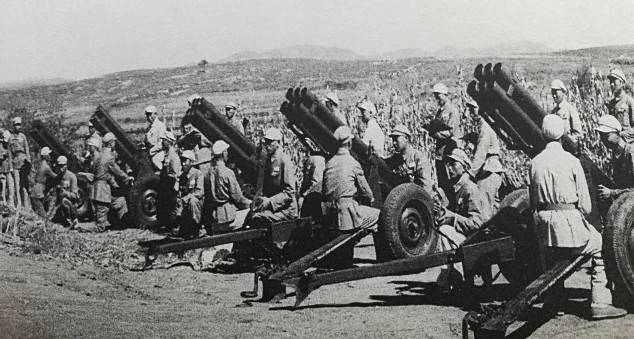
Each regiment had two divisions of 12 installations, the division had three MLRS batteries, adapted for firing Type 488 projectiles (firing range 6 m).
The Chinese sources best cover the activities of the 210th regiment, which entered the battle on the night of November 3-4, 1951, in the North Korean Chorwon county. One of the batteries (4 installations), advanced to the line of contact, fired 132 shots, allegedly destroying the South Korean infantry and a battery of 81-mm mortars before platooning.
In the following days, during the battles for the hill known as the Highland, the 1st Battalion of the 210th Regiment provided substantial assistance to the Chinese infantry, firing at enemy positions, destroying barbed wire and making passes through minefields. In total, more than 1 rockets were fired at the enemy. The Chinese authors claim that the first salvo alone killed about 000 enemy infantrymen.
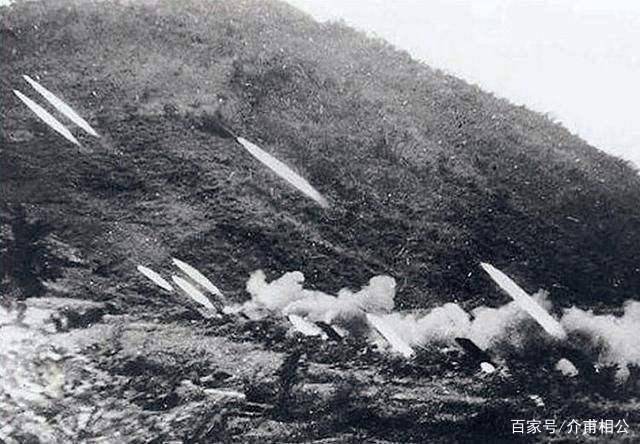
In the spring of 1953, the 1st Division of the 210th Regiment was transferred to the 23rd Volunteer Army, and the 2nd Division was transferred to the 24th Volunteer Army to support the Chinese counteroffensive. Between June and November, the 1st Battalion destroyed more than 700 enemy soldiers, 19 vehicles and several firing points.
In early July 1953, shortly before the conclusion of the armistice, the 2nd Division of the 210th Regiment supported the actions of the 73rd Division of Chinese People's Volunteers with fire. Operating in the face of intense enemy fire resistance, the batteries of rocket guns destroyed 9 positions of mortars and recoilless guns, which contributed to the success of the Chinese infantry. In one of the battles, the battery of the 1st battalion helped to repel an enemy attack, destroying 274 infantrymen with two volleys.
In the specific conditions of the Korean War, Chinese-made six-barreled rocket launchers generally performed well. With American air superiority and enemy artillery superiority, the hilly terrain was well suited for the use of relatively light and compact towed MLRS. The Type 506 units had greater tactical mobility than the Soviet Katyushas. The towed installations could be rolled by the forces of the calculation and the use of horse-drawn traction. In addition, towed installations were much easier to camouflage than BM-13N rocket artillery combat vehicles on a cargo chassis.
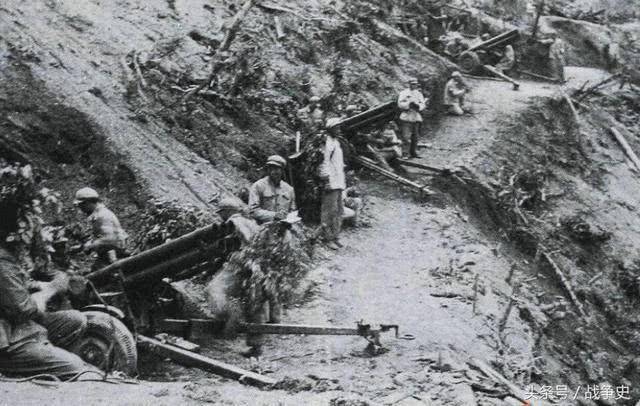
To camouflage and shelter the towed MLRS during daylight hours, Chinese people's volunteers used caves dug in the hillsides, which made it possible to hide the rocket weapons from enemy aircraft and artillery observers. Sometimes the settings were used individually. The relatively low weight made it possible to roll them manually and take positions inaccessible to other, heavier and more cumbersome artillery systems. The Type 506 single rocket cannons were commonly used for harassing fire at night.
After the end of hostilities in Korea, all surviving Type 506s were returned to China. But they did not remain in service with the PLA for long and were quickly replaced by more effective Soviet and Chinese-made multiple launch rocket systems.
In 1954, the existing Type 506 rocket launchers and the remaining shells for them were transferred to North Vietnam. Chinese-made MLRS were used in the Battle of Dien Bien Phu. This large-scale battle, which lasted from March 13 to May 7, ended in an unconditional victory for the Viet Minh.
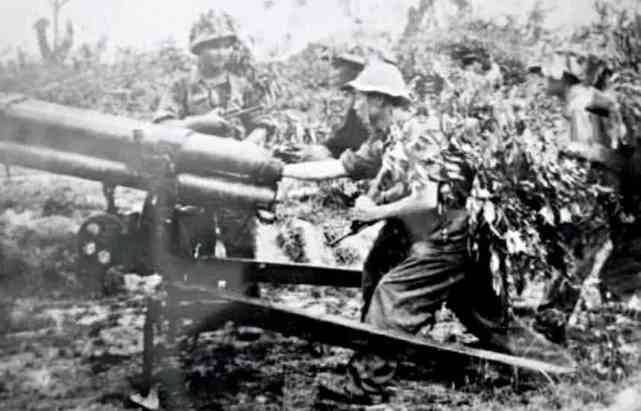
As a result of the crushing defeat at Dien Bien Phu, the grouping of French troops in Indochina suffered serious losses in manpower, equipment and weapons. In addition, the surrender of a large French contingent caused great damage to the prestige and influence of France, which ultimately led to the withdrawal of French troops from Indochina.
By May 1954, the North Vietnamese troops had used up all the delivered rockets. Due to the fact that the production of Type 488 missiles was discontinued, Type 506 installations were no longer used in combat.
BM-13N rocket artillery combat vehicle
At the end of 1950, the Soviet Union delivered to the PRC a large batch of BM-13N multiple launch rocket systems and rockets.
On February 14, 1951, the 21st Volunteer Artillery Division was formed. As part of this division, there were five rocket artillery regiments, each of which had 24 BM-13N vehicles.
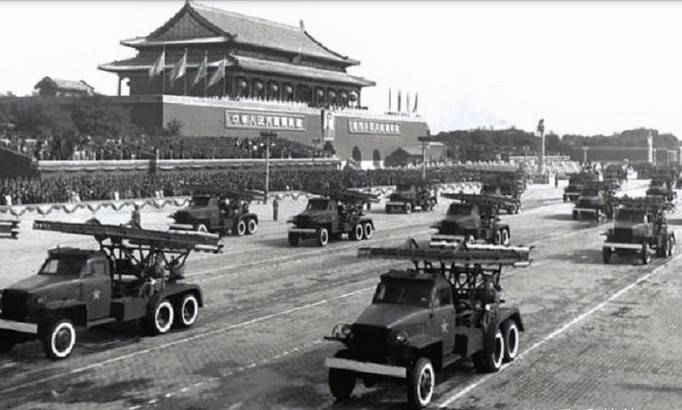
MLRS on the chassis of the American Studebaker US6 truck weighing 7,9 tons on the highway was able to reach speeds of more than 70 km / h. Thanks to all-wheel drive, the car had a good cross-country ability for a truck.
For firing, two types of shells with a high-explosive fragmentation warhead could be used: M-13 and M-13-UK. The firing range of the M-13 projectile reached 8 470 m, but there was a very significant dispersion. When firing at the maximum range according to the 1941 firing tables, the range dispersion was 135 m, the side dispersion - 300 m.
Ignition of the solid propellant charge in the engine was carried out by an electric fuse. Seven 13-mm cylindrical pieces with one axial channel were placed in the combustion chamber of the M-40 projectile. The stabilization of the projectile in flight was achieved using a tail stabilizer with four feathers welded from stamped steel parts. The mass of the equipped projectile was 42,3 kg. The mass of the warhead of the M-13 projectile is 22 kg, the mass of the explosive is 4,9 kg.
When the warhead was detonated, more than 1 fragments of various masses were formed. The dispersal of lethal fragments during the explosion of a high-explosive fragmentation warhead was 000 m along the front and 70 m in depth. Individual fragments retained their lethal effect at distances of up to 25–250 m. Due to the fact that the jet engine was very hot during operation, its fragments had a good incendiary effect. During the volley, air waves of close bursts of 300 shells were superimposed on each other, which intensified the destruction.
In 1943, the M-13-UK rocket with improved accuracy entered service. To reduce scattering in the front centering thickening of the rocket part of the projectile, there were 12 tangentially located holes through which, during the operation of the rocket engine, a part of the powder gases escaped, driving the projectile into rotation. Although the range of the projectile was reduced to 7,9 km, at the maximum distance the dispersion in range was 105 m, lateral - 200 m.
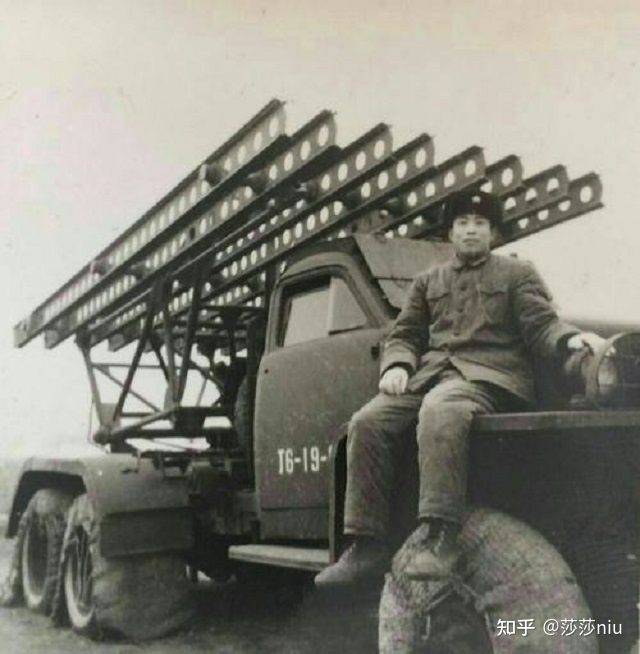
The training of the personnel of the 21st artillery division proceeded at a very high rate. Under normal conditions, it took at least six months to fully train crews and control officers. The task was complicated by the fact that the literacy rate of the PLA military at the time was very low. Despite all the difficulties, the Chinese, with the help of Soviet advisers, coped with the task. A month and a half after the formation of the division, it was declared combat-ready and transferred to North Korea.
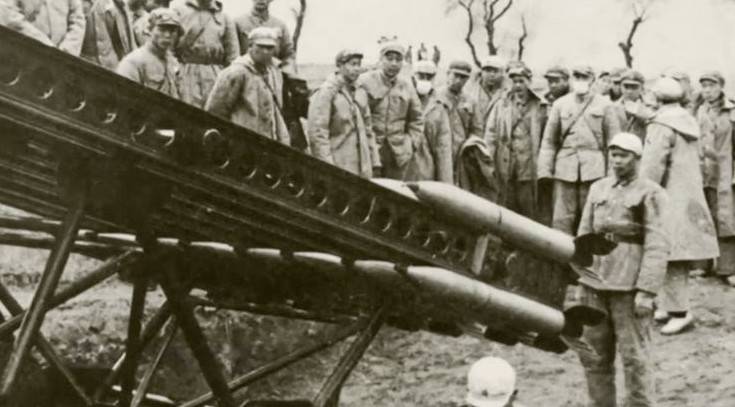
On September 1, 1951, the Chinese Katyushas fired the first shells at the enemy.
All 24 vehicles of the 235th rocket artillery regiment struck simultaneously. According to Chinese sources, positions of two battalions of the 7th Infantry Division of the US Army were fired in this battle, and at least 700 enemy soldiers were killed or wounded.
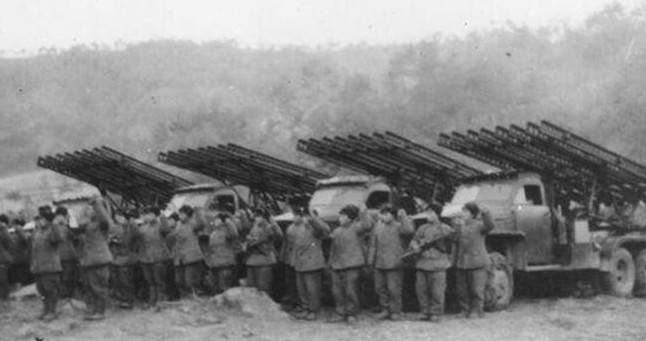
The data on enemy losses provided by the Chinese seem overstated, but it should be admitted that the Katyushas after arriving at the front had a noticeable effect on the course of hostilities.
BM-13N had a very significant impact on the battle for Shanganling (battle for Triangular Hill), which began on October 14, 1952 and lasted 43 days. Here the 209th rocket artillery regiment distinguished itself, operating as part of the combat artillery group of the 7th volunteer artillery division. Before the start of the offensive, the Chinese artillerymen fired at the positions of the UN forces for 12 hours with 175 large-caliber guns, 120-mm mortars and "Katyusha", which became the largest Chinese artillery operation of the entire war.
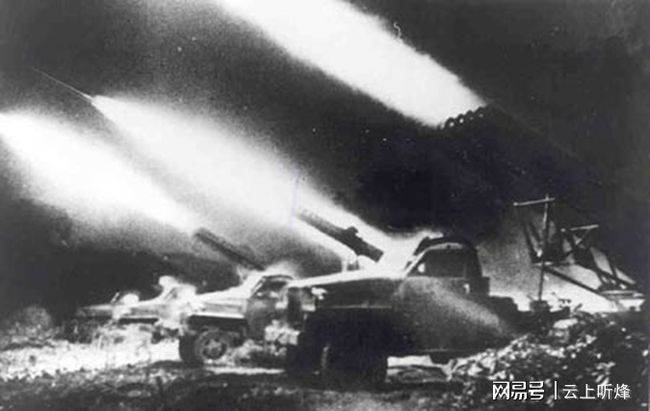
Although during the entire battle the number of shells fired by the Chinese artillerymen was only 20% of the number of shells fired by the American and South Korean artillery, this was the largest artillery support provided to the people's volunteers.
In total, Chinese artillery pieces, mortars and rocket launchers in the battle for Shanganling fired more than 400 thousand shells.
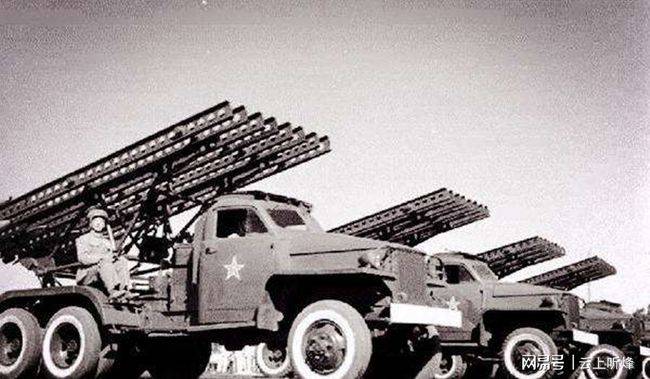
Feeling the blows of the Katyusha, the Americans did everything to neutralize the missile divisions. A major drawback of the BM-13M machine was the lack of armor protection, which made it vulnerable even to shelling from a rifle caliber machine gun. In addition, significant dimensions made camouflage difficult, and the wheel drive did not contribute to high off-road mobility.
In order to reduce casualties to a minimum, the Chinese People's Volunteer Command in Korea used guerrilla tactics. Rocket artillery combat vehicles operated mainly in the dark.
On the march, the BM-13N convoy was without fail accompanied by 37-mm anti-aircraft guns and 12,7-mm machine guns. During the day, individual cars were hidden in specially dug caves or carefully masked with vegetation.
Since, when firing, the fiery tails of the rocket projectiles unmasked the location of the combat position, in most cases, having fired one salvo, the rocket artillery vehicles hurriedly left it.
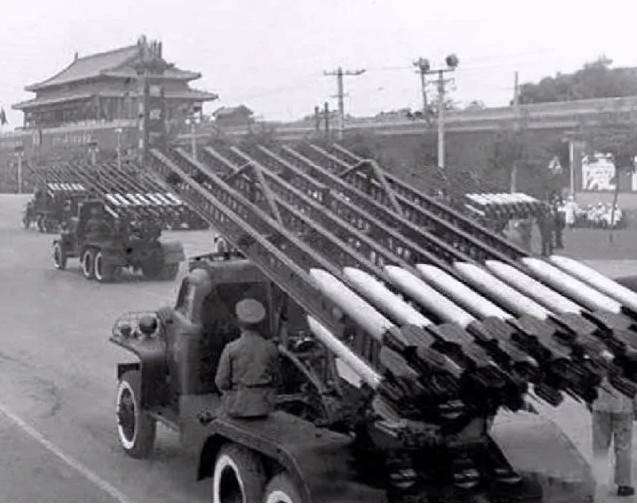
Despite the poor training of Chinese calculations, a chronic shortage of shells and high losses from enemy aircraft and artillery, BM-13N combat vehicles have proven themselves positively during the hostilities on the Korean Peninsula.
After the end of the Korean War, the Katyusha remained in service with the PLA until the early 1980s. For the BM-13N troops available in the PRC, they launched the release of rockets with improved characteristics.
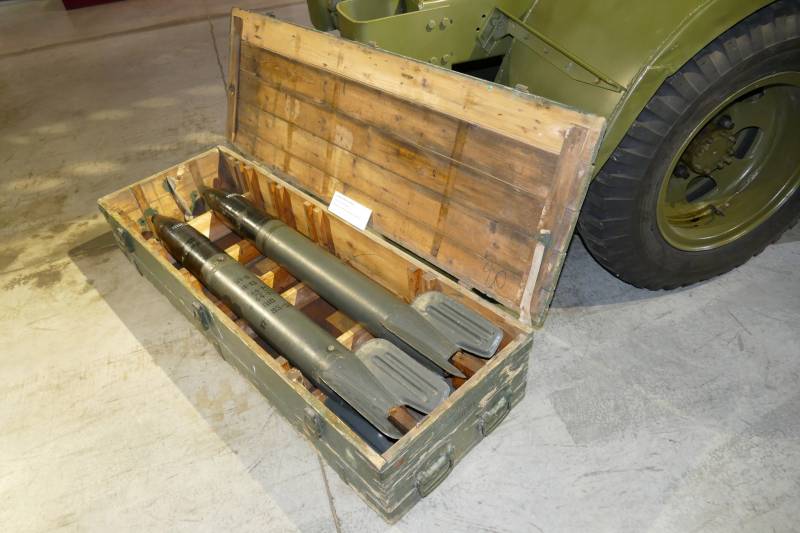
Information